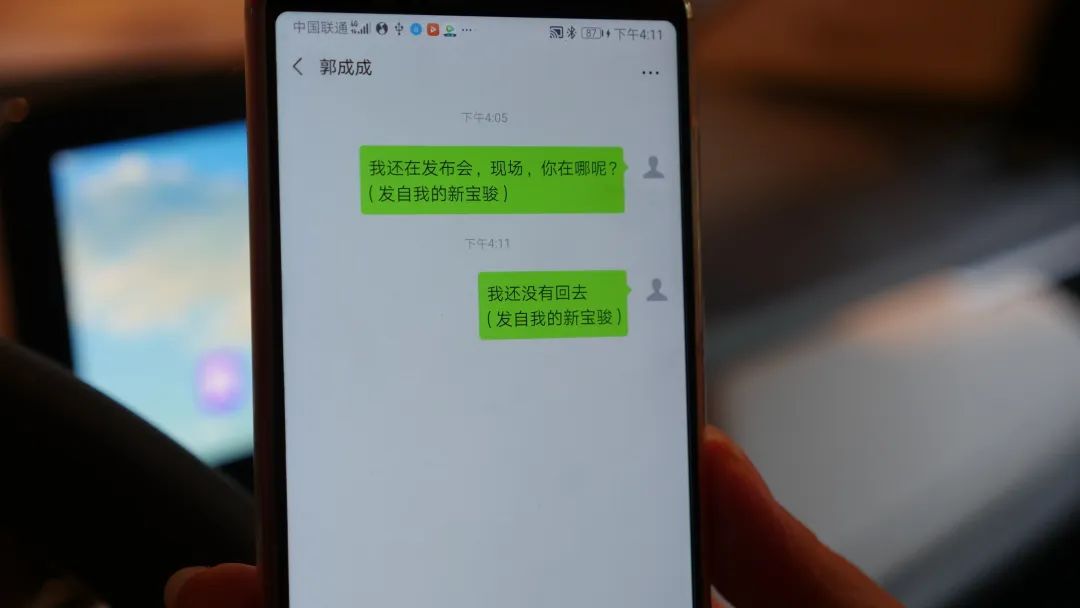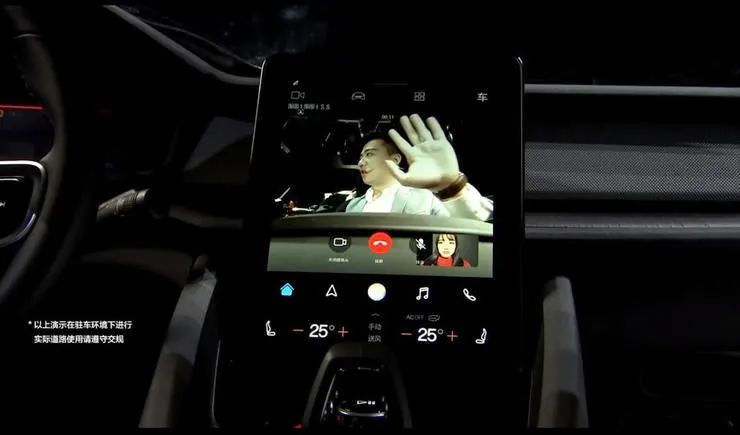Why do mobile phone manufacturers love to get in with cars?
Editor’s note: This article comes from the WeChat public account “Geek Park” (ID: geekpark) , author: Zhao Zi Xiao.
The first car for young people is unlikely, but letting young people use the service in the car, Xiaomi is really moved.
On April 17, Botai, a car networking company, announced that it has received Xiaomi Group’s B round of strategic investment. The investment amount and specific share ratio have not been disclosed. However, Botai said that the two sides will conduct in-depth cooperation “to join hands to open up a new era of Internet of Vehicles.” One sentence is enough to express Xiaomi’s determination to enter the Internet of Vehicles.
Obviously, Xiaomi took a fancy to the scene of the car. In the past few years, the car has been regarded as the next market with huge changes. Every part of every car in the future can be transformed into more intelligent.
Among them, the Internet of Vehicles is the closest function to people. Of course, not only Xiaomi, but only the mobile phone manufacturers who are eyeing the auto industry, it is difficult to count with one hand. Behind mobile phone manufacturers betting on the next market, how does Xiaomi plan to take the first step?
Xiaomi’s “car” dream
Botei is a third-party car networking service provider in China. According to official information, Botei has built a cross-platform system with car life services as the core that integrates three parts: in-vehicle, Internet and mobile phones. , Luxury car brands such as Bentley and Jaguar Land Rover provide connected car products or services.
In 2019, Botai officially released the newest product “Internet of Cars”, which changed the traditional in-car entertainment system and used the computing power of the mobile phone carried by everyone to support smart applications in the car at any time.
From the perspective of Botai investors, the e-commerce platform Suning and the car company Dongfeng are clearly looking at companies in the imagination space of the Internet of Vehicles. This again confirms the ideas of various companies in the automotive field.

via blog WeChat released by Thai Car Network Voice | Live shooting
In contrast, Xiaomi ’s investment is more logical.
Xiaomi is not just a mobile phone manufacturer, but multiple “engines” such as mobile phones, artificial intelligence and the Internet of ThingsSpecies. According to Lei Jun’s speech at the Xiaomi Developer Conference at the end of 2019, after 6 years of layout, the Xiaomi ecological chain currently has 2,200 devices and 196 million access devices across the entire network, a year-on-year increase of 69.5%.
However, of the 2200 devices, not many are directly related to cars. Xiaomi has also focused on automotive-related businesses, but the final results are hardly satisfactory.
As early as 2014, Xiaomi invested in Kay Lide, which was one of the largest car navigation service providers in China at the time. At that time, it was the peak period for grabbing the mobile Internet entrance. The mobile map field was the mobile Internet “entry” that Chinese technology giants were concerned about. BAT has made big moves in this field: Baidu launched Baidu Maps, Alibaba’s wholly-owned acquisition of Gaode, and Tencent’s stake in NavInfo. As an emerging technology giant, Xiaomi is naturally unwilling to abandon this market.
But in the end, Kay Lide failed to catch up with the tide of mobile Internet and successfully transformed, gradually becoming bleak. Along with the decline of Kay Lide, there was the banner of the Internet of Vehicles strategy that it held high.
The subsequent story is also very clear. Although Xiaomi failed to seize the mobile Internet portal map, but in addition to mobile phones, it walked out of an ecological chain and pushed smart products to ordinary people ’s homes.
Xiaomi calls it AIoT, a combination of artificial intelligence and the Internet of Things, and will bring it to the same position as mobile phones in 2019, namely the “mobile phone + AIoT” dual-engine strategy. Lei Jun called the era of 5G + AI + IoT as the “super Internet” era. He believes that in this era, the overall replacement of platforms, operating systems, computing power chips, and communication technologies will occur.

Lei Junzeng Announced the “mobile phone + AIoT” dual-engine strategy at the Xiaomi Developer Conference | Xiaomi
Botai founder Ying Yilun once mentioned in a public speech that the next decade will be the era of the Internet of Everything, and the car is the center of the mobile world. , Link the entire smart city and life services. “
For this reason, Broadtech has formulated “1 + 1 + N” in its development strategy-vehicle + mobile phone + N, N refers to various input and output devices, including headphones, watches, bracelets, TVs and other smart Home and various IoT devices.
To a certain extent, this coincides with the development of Xiaomi. Lei Jun also mentioned in this investment that ChelianThe Internet is an important part of future technology, and the car is also the most important smart terminal in people’s lives in the future.
Mobile phone factory aimed at the car
Mobile phone manufacturers aiming at the Internet of Vehicles are more than Xiaomi.
Just this month, Huawei officially unveiled the car demonstration of its car networking application HiCar at its spring conference, connecting mobile phones to vehicle machines, and completing mobile multimedia applications in automobiles.
Not only that, Huawei claims that HiCar can access Huawei ’s capabilities in AI, voice, computer vision, etc., and use the 5G network of mobile devices to enhance the data interaction capabilities of the vehicle-machine system.
Interestingly, the “Car Networking” that Botai is doing has similarities with HiCar, and the business is somewhat similar. Both use the computing power of the mobile phone to complete multimedia and more applications on the car. For example, the car network can use voice to send WeChat, HiCar can use the mobile phone to connect the camera in the car for video calls, and so on.

HiCar can make video calls in the car | Live screenshot
Xiaomi and Huawei also have different logics as they are mobile phone manufacturers marching into the automotive field.
As mentioned in a previous article in Geekpark (ID: geekpark), HiCar took the lead in the layout of Huawei ’s automotive field, but Huawei ’s ambitions do n’t stop there. Over the past two years, Huawei has disclosed its actions in the automotive field, and even announced its positioning: focusing on ICT technology and becoming an incremental component supplier for intelligent connected vehicles.
Putting emphasis on “incremental”, it is clear that Huawei will be separated from the traditional Tier 1 and is determined to do supply chain business during the intelligent transformation period of the automotive market. At the 2019 World Intelligent Connected Car Conference, Huawei ’s rotating chairman Xu Zhijun publicly stated that he would build on-board sensors such as lidar and millimeter-wave radar.
On the contrary, Xiaomi used investment to enter the field. The ecological chain that has always been good has made it a leader in the field of smart homes. If according to Xiaomi ’s 5G + AI + IoT strategic thinking, the car ’s position is indispensable. less.
An industry source revealed to Geek Park that Xiaomi has indeed entered the field of connected cars. But it is undeniable that compared with Huawei’s high-profile announcement and the successive launch of products and strategies, Xiaomi’s road to networkingBelongs to just started. As for where it will develop in the future, the imagination is still huge. At least, in the “Internet of Everything” scenario, Xiaomi will never let go.
Automobiles are a huge market. Miao Wei, Minister of China’s Ministry of Industry and Information Technology, once said that it is expected that by 2020, the market size of China’s intelligent connected cars will reach more than 100 billion yuan. According to the prediction of the Prospective Industry Research Institute, the scale of China’s car networking market will reach 42.8 billion US dollars and 53 billion US dollars in 2021-2022.
After experiencing the iteration of the mobile phone market, people are not afraid to underestimate the energy of the mobile Internet. In the era of intelligent transformation of automobiles, plus the support of technologies such as 5G and the Internet of Things, even if only occupying a small piece of cake, it is enough for the giants to grow in it. This is also the reason why mobile phone manufacturers will lay out in the automotive field. Their understanding of software + hardware + Internet is more thorough than that of companies in most industries, and they can clearly see the growth of the automotive market for themselves.
Internet of vehicles, newcomer Xiaomi officially reported.